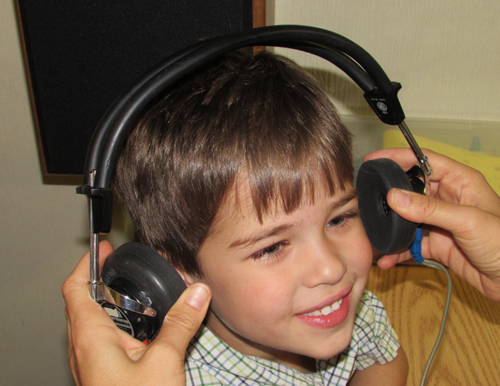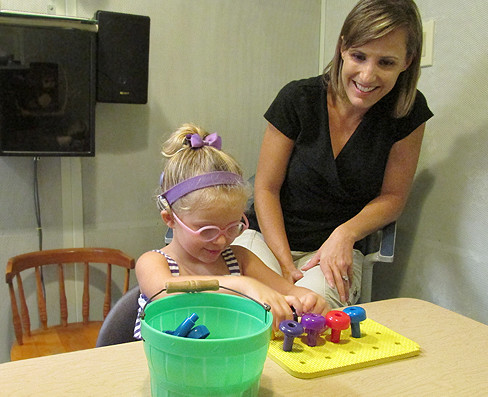Diagnostic Hearing Tests
There are many methods we can use to assess the hearing of your child. Which method we select depends on many things like the age of your child, how comfortable they are with the test, and health or developmental concerns.
 For the audiological evaluation, we will try to plot an audiogram of the softest or faintest sounds your child can hear at a variety of different frequencies or pitches. We try to use headphones or small earphones, which allow us to obtain ear-specific test information. We also try to determine how soft we can speak and still have your child hear us, as well as how well your child is able to understand speech.
For the audiological evaluation, we will try to plot an audiogram of the softest or faintest sounds your child can hear at a variety of different frequencies or pitches. We try to use headphones or small earphones, which allow us to obtain ear-specific test information. We also try to determine how soft we can speak and still have your child hear us, as well as how well your child is able to understand speech.
If your child refuses to wear headphones, we can also use speakers in the sound booth. Using speakers will only give us a general idea of how your child hears, but not ear-specific information. Because we prefer the use of headphones, you can help your child feel comfortable with this part of the test by practicing at home with headphones before you come to your appointment.
If your child is too young to raise his or her hand when hearing the tones, we can use a type of testing that seems more like a game. For this type of testing, called conditioned play audiometry, we ask the child to drop a block in a bucket or place a peg in a pegboard when he or she hears the sound.

With very young children, even conditioned play audiometry is too difficult of a task. For these children, we use a type of testing called visual reinforcement audiometry, where we train the child to look toward a sound when it is presented on the right or left side. If the child looks correctly, he or she is “rewarded” with a short video clip. If we are not successful with visual reinforcement audiometry, we typically recommend a brainstem auditory evoked response test. (See information below).
Other tests include the otoacoustic emissions assessment, auditory steady-state response testing, and auditory processing disorder testing.
Your child may also be a candidate for a cochlear implant.
BAER testing: